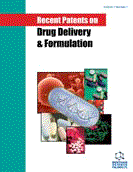Abstract
Purpose: The purpose of the study was formulation development, optimization and evaluation of a Self-Emulsifying Drug Delivery System (SEDDS) of Simvastatin (SIM) for improvement in dissolution and bioavailability of SIM. Solubility enhancement of Biopharmaceutical Classification System (BCS) Class-II drugs is a burning topic and attracting various publications and patents regarding different strategies employed for improvement of dissolution viz., USOO5340591A (Solid dispersion), US005472954A, US005646131A (complexation), USOO5858410A (Nanosuspensions), USOO5874029A (micronization) US2008.00095O2A1 (Solid composites), US2008O146640A1 (Prodrug) US 2009001 1009 A1 (nanocapsules), etc.
Methods: SEDDS was prepared on the basis of solubility studies employing Capmul MCM EP as lipid and Cremophor ELP as surfactant. Box-Behnken design was implemented for optimization by using lipid concentration, surfactant concentration and mixing time as dependent variables and their impact was observed on particle size, poly dispersity index (PDI) and drug released in 15min. Optimized formulation was evaluated for particle size, PDI, zeta potential, emulsification time, transmittance, invitro drug release and in situ Single-Pass Intestinal Perfusion (SPIP) studies.
Results: For optimized formulation, OF1 value of particle size, PDI, zeta potential, emulsification time, transmittance and percent in-vitro release were 162±14.32nm, 0.19±0.01, -22.3 ±1.1mV, 93±3.11 sec, 99.45±4.35 % and 99.43± 5.6 % in 30 min respectively. In-situ SPIP studies were performed on Wistar rats and the value of predicted fraction absorbed for humans was found to be 0.98.
Conclusion: SIM SEDDS was successfully developed and evaluated for in-vitro & in-vivo parameters. All the evaluated parameters were in tolerable limits. In vitro release studies from optimized formulation, OF1, exhibited maximum drug release when compared to SIM API and marketed preparation. Moreover, the predicted value of fraction absorbed (Fa) in humans by in-situ SPIP method was also in agreement with in-vitro dissolution studies thus, confirming SEDDS as a suitable drug delivery system for solubility enhancement of SIM.
Keywords: Self-emulsifying drug delivery system, simvastatin, Box- Behnken design, single-pass intestinal perfusion, solubility enhancement, simvastatin.
Graphical Abstract
 32
32 1
1














